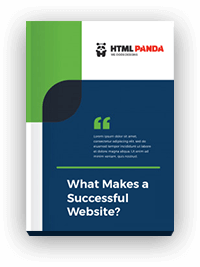Artificial Intelligence (AI) is quickly changing the world of IT. It automates many tasks. This makes some people wonder about their job security. AI does have a big impact on what we do every day.
Even with AI’s power, some things remain uniquely human. AI is great at crunching data, finding patterns, and doing jobs over and over. But complex thinking, making big plans, judging right from wrong, and talking well with people are different. These skills are very hard for AI to master.
This article will show you five important IT jobs. These roles need human skills that AI cannot fully copy. You will see why these careers are strong picks for the future.
1. Cybersecurity Analyst: The Human Shield Against Evolving Threats
Cybersecurity is not just about finding known problems. It’s about outsmarting clever, human attackers. This needs human smarts, quick choices, and a good sense of right and wrong.
Proactive Threat Hunting and Incident Response
AI helps spot common digital threats. Yet, it struggles with brand new attacks. These are called zero-day exploits or very sneaky bad code. Humans can guess what an attacker might do next. They come up with new ways to fight back. Cyberattacks become more complex every day. A person’s intuition is key to finding and stopping these new threats.
Ethical Hacking and Penetration Testing
Ethical hacking means trying to break into a system. You do this to find its weak spots. This job needs you to think like a bad guy. You must understand a business well and be creative. AI cannot copy this human way of thinking. For example, a skilled human hacker found a hidden flaw in a network that all automated tools missed.
Security Policy Development and Compliance
AI can help check if rules are being followed. But it cannot create the big picture security rules for a company. Deciding on these rules takes balancing risks, business needs, and what’s fair and legal. This complex thought process needs human judgment.
2. Cloud Solutions Architect: Designing and Orchestrating Complex Digital Ecosystems
This job is about designing. It calls for big-picture thinking and working closely with clients. A cloud architect understands business goals and brings many technologies together.
Strategic Cloud Planning and Business Alignment
AI can make your current cloud setup better. However, it cannot build a cloud plan from scratch. This plan must fit a company’s special goals and how it wants to grow. It also needs to match market changes. That takes human vision. One cloud expert said, “Cloud strategy is about people and purpose, not just tech.”
Hybrid and Multi-Cloud Integration Expertise
Many companies use different cloud systems. Think AWS, Azure, and Google Cloud, plus their own computers. Managing all these together is tough. Architects know how they all link up. They pick the best ways to save money and make things run fast. This requires a full, human understanding of many moving parts.
Designing for Resilience and Disaster Recovery
Making strong plans for when things go wrong is vital. This means thinking about every possible problem. How will the business keep running? What if systems fail? These choices require careful human thought. They also involve checking many risks.
3. Data Scientist (with a focus on interpretation and strategy): Beyond Algorithm Output
AI is very good at building data models. But a human is needed to truly understand the data. They must explain what it means and use it to make smart business choices. This also requires deep knowledge of a specific field.
Translating Data Insights into Business Strategy
AI can find patterns in vast amounts of data. Humans are needed to explain these patterns within the real business world. They find out why things are happening. Then, they turn these findings into practical plans. These plans help companies grow and solve real problems. A data scientist might use sales info to change an ad campaign or make a product better.
Communicating Complex Findings to Non-Technical Stakeholders
Data scientists must be good storytellers. They take hard numbers and tricky models. Then, they explain them simply to leaders who don’t work with data every day. They show how the findings will help the company. Using good charts and simple words helps them do this well.
Ethical Data Handling and Bias Mitigation
AI models can show unfairness if the data they learn from has biases. Humans must find these biases. They must fix them. This ensures data is used fairly and privately. It also makes sure AI tools do not harm anyone. AI cannot ensure good ethics on its own.
4. IT Project Manager: Navigating Human Dynamics and Complex Scenarios
This job relies on soft skills, leading people, and flexible planning. AI tools can help manage projects. But they cannot handle the changing nature of people or project bumps.
Stakeholder Management and Team Leadership
Project managers work with many people. This includes the team building the product and others who care about it. They need emotional smarts, negotiation skills, and a knack for solving problems. They also must motivate everyone. These are all human qualities. As one management expert put it, “Leading a project is really about leading people.”
Agile Adaptation and Risk Management
Projects often change as they go. New needs pop up. Unexpected problems appear. Project managers must react fast to these changes. They make quick, smart choices about the team and what’s next. While AI tools offer support, they cannot guide these tricky, real-time choices.
Budget Oversight and Resource Allocation Strategy
Project managers make smart choices about how money is spent. They also decide where to put staff and skills. This means thinking about how busy people are and how happy the team is. They must balance this with money limits. This needs a human touch.
5. User Experience (UX) Researcher/Designer: Empathy-Driven Innovation
The heart of UX is understanding people. This means knowing their feelings, actions, and what they need. It takes empathy and listening carefully. AI struggles to truly feel or get these human insights.
Empathy Mapping and User Journey Creation
UX researchers connect deeply with users. They listen to people’s stories. They watch how they use things. Then, they create maps of the user’s journey. These maps show feelings and problems users face. AI cannot experience these feelings. For instance, understanding a user’s struggle with an old website led to a major redesign that customers loved.
Usability Testing and Iterative Design
AI can look at how users click and move on a screen. But human researchers are key for real-time tests. They watch users in action. They hear detailed feedback. This human input guides how designs get better over time.
Designing for Inclusivity and Accessibility
Designing products for everyone is a must. This includes people with different needs and abilities. It takes deep human understanding and clever ideas to make things work for all. Good access design helps millions of people use technology freely. This goal needs human care.
Conclusion
AI is a strong tool. It helps us do our jobs better. It does not take over these key IT roles. Instead, AI makes human skills even more valuable in these areas.
The future of IT jobs rests on unique human traits. These include critical thinking, coming up with new ideas, understanding emotions, seeing the big picture, and doing what is right.
For IT professionals, the path forward is clear. Keep learning and growing in these human skills. This will make your career strong and ready for a world with more AI.









